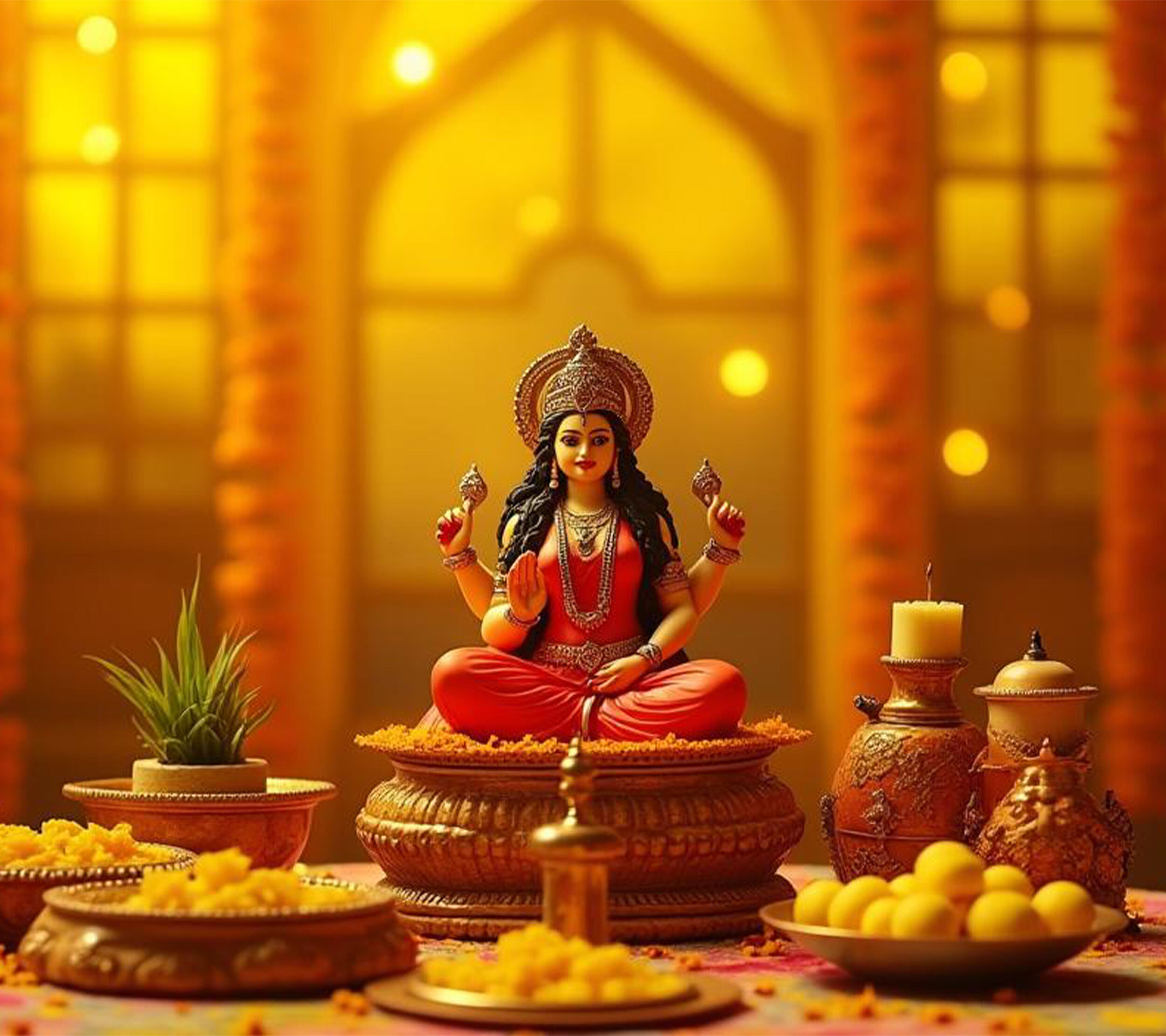STORIES BY DIWAS

Lifestyle
Understanding the Importance of Yellow Colour on Basant Panchami: Traditions and Symbolism
Date 1 February 2025 Reading time: 7-10 mins
As winter slips into spring, a bright and beautiful festival ushers in the season of new beginnings - Basant Panchami. And if there's one colour that steals the show during this joyous celebration, it's undoubtedly yellow!
From blooming mustard fields to marigold garlands, from saffron-infused sweets to vibrant ethnic wear, yellow is everywhere. But have you ever wondered why this sunny hue takes centre stage during Basant Panchami?
Let's dive deep into the significance of yellow colour on Basant Panchami and discover its myriad roles in the festival's rituals and offerings.
Understanding Basant Panchami
To truly understand the importance of yellow colour on basant panchami, it’s important to understand Basant Panchami and its cultural roots and the deeper significance it holds in spiritual and seasonal contexts.
The Significance of Basant Panchami
Basant Panchami, the festival heralding the arrival of spring, is celebrated on the fifth day of the bright half of the Hindu month Magha, usually in late January or early February. It's a day dedicated to Goddess Saraswati, the deity of knowledge, wisdom, art, and music. Across India, people worship Maa Saraswati, seeking her blessings for a prosperous and enlightened life.
But Basant Panchami is more than just a religious festival; it’s a celebration of the season’s bounty, nature’s renewal, and the warmth and vibrancy of life itself. The significance of yellow colour on Basant Panchami is profound, linking the spiritual with the seasonal, the sacred with the festive. This is where the importance of yellow colour on Basant Panchami becomes truly evident.
The Role of Yellow in Basant Panchami
Why Yellow is Important in Basant Panchami Rituals
In the vivid tapestry of this celebration, yellow is the dominant thread and the significance of yellow colour on Basant Panchami is multi-layered, stemming from both spiritual symbolism and seasonal associations.
Firstly, yellow is the colour of Goddess Saraswati herself. Clad in a dazzling yellow saree, adorned with a garland of yellow flowers, Maa Saraswati is the embodiment of knowledge and enlightenment. The colour represents the illumination of the mind, the radiance of wisdom, the purity of thought.
By wearing yellow on Basant Panchami, devotees seek to imbibe these qualities, to let the light of learning suffuse their being. The importance of yellow colour on Basant Panchami also reflects the goddess's role as a symbol of divine wisdom and intellectual growth.
Moreover, yellow is inextricably linked with the spring season. As the winter gloom recedes, the mustard fields burst into bloom, carpeting the countryside in a vibrant yellow. The golden hue of the sun grows warmer, the days longer. Yellow becomes the colour of rejuvenation, of new life stirring in the earth. By celebrating with yellow, we align ourselves with the cycle of nature, embracing the energy and optimism of spring. The significance of yellow colour on Basant Panchami thus embodies the spirit of renewal and hope for a prosperous future.
So on Basant Panchami, yellow is everywhere - in the clothes people wear, the flowers they offer, the foods they prepare. Men don traditional kurtas and kurta-pajamas in shades of yellow, often paired with vibrant festive jackets.
Women drape themselves in sunny-hued sarees and salwar suits. Homes and temples are decked with marigolds and mango leaves. The goddess's idol is adorned with a yellow saree and gold ornaments. The importance of yellow colour on Basant Panchami is not just about the visual appeal, but about inviting the divine blessings that the colour represents.
Even the food reflects the colour of the season - from the turmeric-infused kheer to the kesar-flavoured srikhand, from the motichoor ke ladoo to the kesari bhaat. The message is clear - yellow is the colour of joy, of auspiciousness, of new beginnings. By embracing it wholeheartedly, we invite prosperity and positivity into our lives. This reflects the significance of yellow colour on Basant Panchami, not only as a decorative hue but as a symbol of the abundance and happiness associated with the festival.
Yellow Offerings in Basant Panchami
One of the most important aspects of Basant Panchami celebrations is the offering of yellow items to Goddess Saraswati. These offerings are a way of seeking her blessings, of expressing gratitude for the gift of knowledge, and of reaffirming our commitment to learning and growth. The importance of yellow colour on Basant Panchami is reflected in these offerings, symbolising the divine light of wisdom and new beginnings. Here are some of the most common yellow offerings:
- Flowers: Marigolds, or gendas, are the most popular flowers offered to Maa Saraswati on Basant Panchami. Their bright yellow petals are believed to please the goddess and bring good luck. Other yellow flowers like chrysanthemums, rajnigandha, and daffodils are also used.
- Sweets: No Indian festival is complete without an array of sweets, and Basant Panchami is no exception. Yellow sweets like kesari halwa, motichoor ladoo, boondi ladoo, and besan ke ladoo are specially prepared and offered to the goddess before being distributed as prasad.
- Rice: In some regions, yellow rice cooked with turmeric is offered to Maa Saraswati. This offering symbolises abundance, nourishment, and the quest for knowledge. The golden hue of the rice is believed to attract prosperity and intellectual growth, filling one’s life with wisdom and spiritual wealth.
- Clothes: Devotees often offer yellow clothes, especially sarees, to the goddess's idol. These clothes are draped on the idol during the puja and later distributed among the needy. The act of offering yellow garments not only represents the desire for divine blessings but also reflects a deep commitment to spreading joy, warmth, and prosperity to others in the community.
Beyond these traditional offerings, people also incorporate yellow into their own festive attire. Women wear yellow sarees or salwar suits, often embellished with floral designs. Men opt for yellow kurtas or kurta-pajama sets, sometimes paired with colourful dupattas or jackets. Children are dressed in bright yellow frocks or shirts.
The idea is to surround oneself with the colour of joy and knowledge, to let its positive energy infuse every aspect of the celebration. This is where the importance of yellow colour on Basant Panchami becomes evident in the clothing and accessories chosen during the festival.
Embracing the Spirit of Yellow: A Symbol of Joy, Knowledge, and Renewal on Basant Panchami
As we've seen, yellow is not just a colour in Basant Panchami - it's a symbol, a feeling, a blessing. From the marigolds offered to Maa Saraswati to the vibrant clothes worn by devotees, from the blooming mustard fields to the turmeric-infused sweets, yellow is the thread that ties the festival together. It represents the light of knowledge, the warmth of spring, the joy of new beginnings. The significance of yellow colour on Basant Panchami is undeniable, as it links the festival to both spiritual and seasonal renewal.
So this Basant Panchami, embrace the colour of the season wholeheartedly. Wear your brightest yellow outfit, offer fragrant yellow blooms to the goddess, relish the delicious yellow treats. Let the significance of yellow colour on Basant Panchami fill your day with positivity, prosperity, and the unending quest for wisdom.
And if you're looking for the perfect festive kurtas to mark the occasion, check out Diwas's delightful collection for Basant Panchami - we've got you covered in every shade of yellow!


